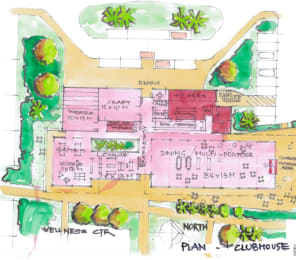Many in the sector breathed a sign of relief when they heard the news that the new Aged Care Act had finally been put to Parliament last Thursday. While the legislation still has to go before a Senate inquiry, its 574 pages should be of interest to village operators.
The Weekly SOURCE published a breaking news newsletter on Thursday afternoon, with four articles: an opinion article, the historic news story, the main changes at a glance and the concessions made by the Government to achieve bipartisan support from the Opposition.
Are retirement village operators winners in the new Aged Care Act?
Yes. The new categories of registration for providers provide an opportunity for those seeking to enter the aged care sector to do so without committing to providing clinical care. For example, retirement village operators could apply for registration in the categories of home modifications and assistive technology, or domestic assistance. The conditions will be less onerous than providers seeking to provide clinical or residential care.
The proposed act also should provide comfort that it does not apply to retirement village operators (unless they are also registered providers). Only registered providers and their aged care workers and responsible persons are caught by the obligations in the Bill, Anita Courtney, Principal, Russell Kennedy, told me.
The legislation, if approved, will allocate $4.3 billion to home care, under a new branding Support at Home. Given the total aged care allocation is $5.6 billion, the emphasis is massively on caring for people outside of residential aged care. Given 61% of retirement village operators, who are members of the Retirement Living Council (RLC), provide home care, according to the 2023 PwC/Property Council Retirement Census, then this is a great opportunity for operators to expand their service if they want and have the resources.
From 1 July 2025, subject to passage of legislation, Support at Home launches with a principle-based service list with three service types:
- clinical care
- independence
- everyday living, as the main diagram shows.
The figures show much a user will be charged.
Under the new Act, a single provider of home care will manage and deliver a participant’s services to meet their needs, within their quarterly budget. The single provider will also be responsible for arranging and sourcing any required assistive technology and/or home modifications. There is also $25,000 in cash to provide end-of-life care in the home.
The question is does an operator want to be administering palliative care in the home, next to the 72-year-old couple who moved in the week before?
In tomorrow's retirement villages, will a Village Manager, Administrative Assistant, maintenance person and gardeners be sufficient to care for a large village, if more than 50% of residents are needing high care?
This will be beyond many retirement village operators, who entered the sector as a property venture.
Will the sector split in two? Or will Shared Care, as outlined by the RLC, become the new backbone of the sector?










